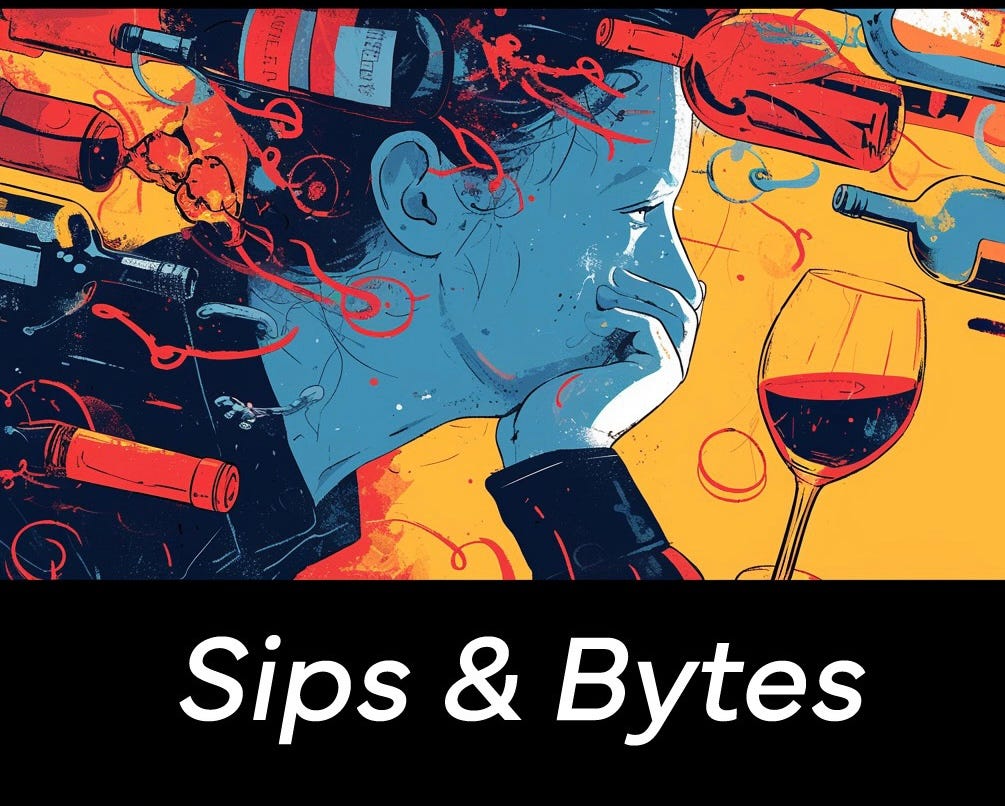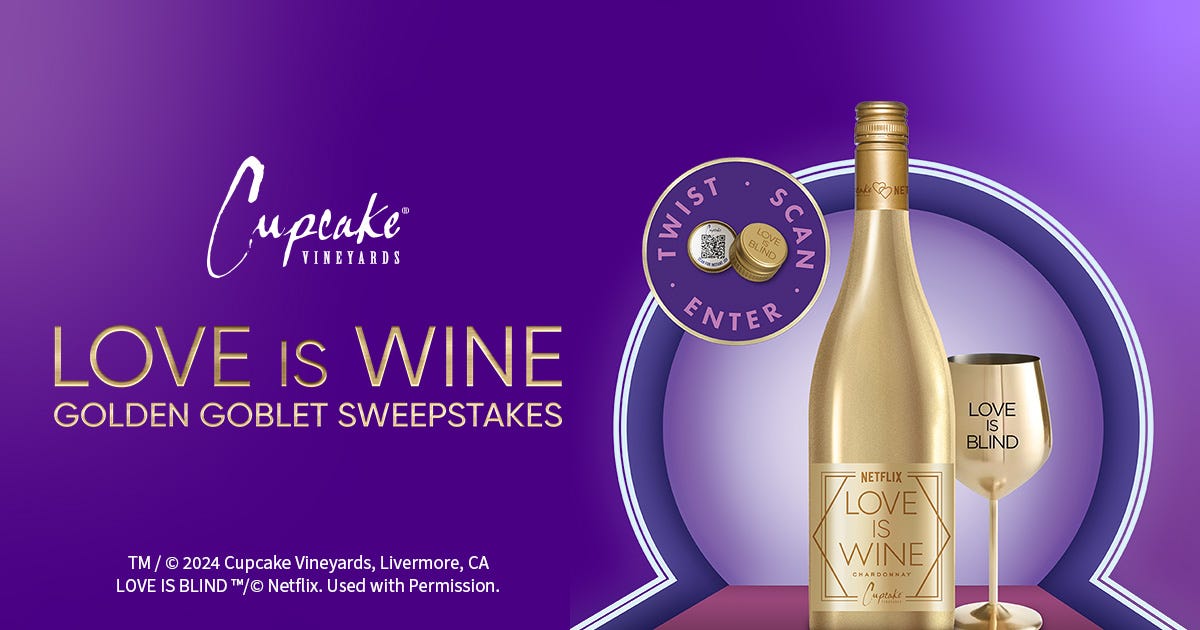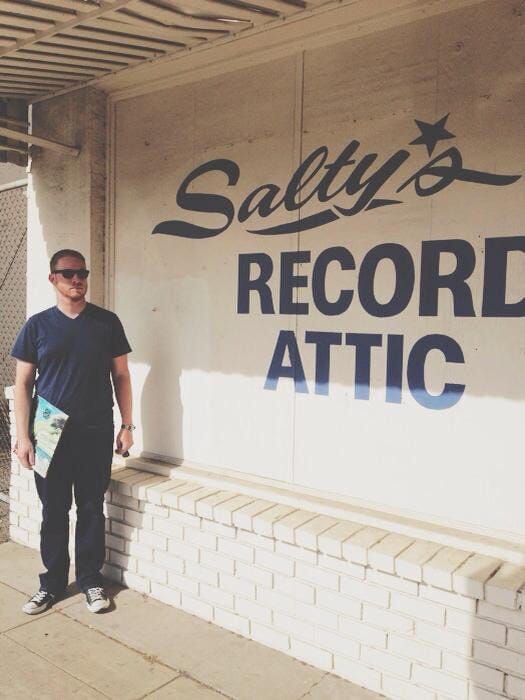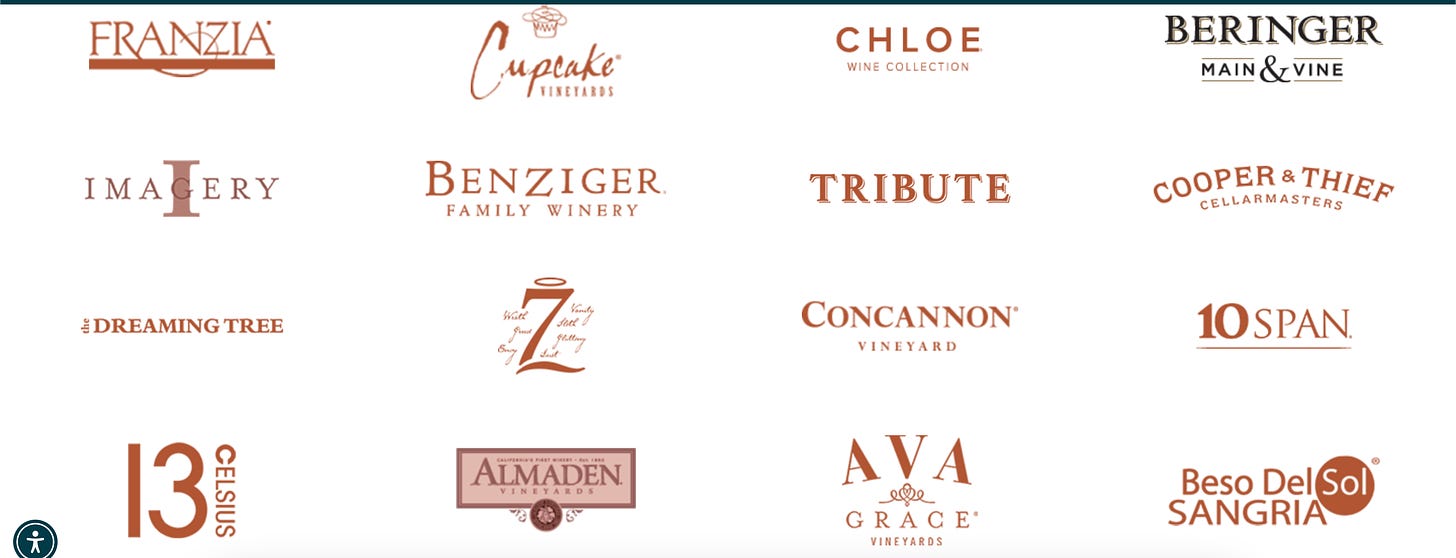Sips & Bytes - Andrew Groom
Doing digital the hard way; marketing gateway and commercial wines . . . online.
Andrew Groom has one of the hardest jobs in Hollywood (or, in this case, the wine industry). He’s the digital engine behind The Wine Group. While running digital for wine companies, big and small, is challenging, it’s particularly hard for brands with most products under $10. He needs to be more innovative than typical wineries because he can’t depend on critics or scores; he often doesn’t have beautiful wineries to drive demand. In fact, he’s frequently up against small-minded industry critics who denigrate large wine companies. He also faces the headwinds of being part of a declining industry segment. And yet, wine companies like The Wine Group carry an enormous responsibility for attracting new customers to the category due to their price points, distribution footprints, and marketing budgets. Like everyone featured, Andrew is a thoughtful, knowledgeable, intelligent, and kind human. Having an agency background gives him a unique perspective as a digital marketer before starting his online wine journey at the “School of Gallo.” However, unlike most digital wine marketers, he had the opportunity to work in the spirits at Gallo and again with the spirits company Atomic Brands to gain a very different perspective for online wine marketing before returning to The Wine Group. He was the first ever chosen to lead their full online efforts and their entire digital transformation initiative. When you look at people responsible for driving innovation in our industry, he is part of a tiny group of change makers.
Let me introduce you to Andrew Groom -
How did you become interested in the intersection of wine and digital tools?
I entered the wine industry in 2013 when social media was a budding idea for the category. Throughout my career, I have always been in digital-centric, shared-service roles on the supplier side, and this has always forced a focus on the intersection of wine and digital tools.
Could you share a noteworthy or exciting achievement or project at your company that excites you or is bragworthy?
I must point to Cupcake's latest partnership with Netflix’s Love is Blind. Now more than ever, wine brands need to connect to cultural moments to build relevance, and I think that team did a fantastic job making that connection.
Do you have a favorite lesser-known wine that you believe deserves more recognition?
I am always drawn to wines willing to eschew the assumptive category norms, whether price, package, place, or anything else. One of my favorites is E’ Rosso from Poderi Cellario. 100% Barbera from Piedmont, zero barrel aging, sealed in a crown-capped 1-liter bottle, and is usually very affordable. It has zero pretenses despite coming from one of the world's most storied wine-growing wine-growing regions.
What key recommendations would you offer a winery looking to integrate digital tools into its sales, marketing, or operational strategies?
Focused, consistent content across all touchpoints can bring these strategies together well. This means ensuring that you say the same thing on a retailer’s product detail page as you do on your website or in a media campaign. Consistency is key.In your view, what is the most significant obstacle wineries face when leveraging digital tools?
The regulatory specifics of our category make it challenging for things to pivot quickly. For instance, countless new tools and technology are launching every day. However, when you try to apply them to the alc bev space, it can often become stunted or impossible. I’m thinking particularly about shoppable media and e-commerce enablement tools that are great on the surface but struggle when you get into the weeds.
What digital tools or technologies are you currently excited about outside the wine industry, and how do you see them potentially benefiting the wine sector?
I see the use of AI to scale content customization happening more often, particularly in categories like the beauty space. With so many different avenues for brand content to live, the scale seems less insurmountable with the growth of AI and machine learning. This is trickling into the wine industry, but I would love to see how we can leverage things like this more.
How has the digital landscape in the wine industry evolved over the past few years, and what trends do you foresee in the near future?
The line between digital and brand marketing teams is blurring, which is a sign of growing acumen. The fog is lifting over e-commerce and how the retailer landscape defines it. Distributors and retailers have made clear investments in engaging in our category digitally that hasn’t been seen before. In the future, I believe we will see the focus shift more and more to owning, sharing, and deploying against data. I think AI will take on a more significant role and force many suppliers to consider our internal structures and how they may change.
In your experience, what are some common misconceptions or pitfalls that wineries should avoid when implementing digital strategies?
Don’t overthink it. Digital marketing is not a separate practice; it’s simply another way of conveying a message and converting a consumer. It can give you more creative ways to bring your messages to life but ultimately is still beholden to the same outcomes as any other marketing tactic. So, don’t spend too much time slicing and dicing the perfect consumer segment or creative asset. Instead, focus on consistent delivery of your key messages to your consumer. And then trust the process 🙂
Name one or people you think are digital stars in the wine industry.
Our distributor partners at Southern Glazer are building something special to meet our space's digital and e-commerce needs. There is a clear focus on capabilities, data, and the benefits of investing in both.
Why is marketing The Wine Group wines harder than, say, brands like Opus One, Mondavi, Duckhorn, or Rombauer?
I wouldn’t describe it as necessarily harder, but rather just different challenges within our shared goal of growing the wine category. Something I find unique about TWG’s portfolio is our diversity of brands. We operate across virtually every price point in the wine category, and each requires a unique set of tools to grow. It also means a wide swath of gatekeepers to get to and through to reach consumers. I’m fortunate to work with an incredible group of marketers focused on each of their brands’ needs. My role is about connecting across the portfolio for efficiency and effectiveness.
In terms of brand building, I think that what consumers want from a $10 box and what they want from a $100 bottle is pretty similar: a high-quality product that meets their needs. How that is articulated for those products is vastly different. Someone looking for a 5L box of wine may be more interested in its reliability over time, whereas someone looking for a wine appellated in a prestigious growing area may be looking for a unique addition to their special dinner. We look to consumers to tell them what they want and build brands that meet their needs.
What do you wish people would understand about wines under $10?
There is quality to be had under $10. I think there’s an assumption that wine prices $10 and under are relegated to some negative connotations. The reality is that we still see some exciting sourcing with high-quality grapes at this price point. I also think there’s a perception in and outside the wine category that the totality of the category is meant for 1-2 occasions: red and white for meals and sparkling for celebrations. The reality is we have a right to play in so many other moments. Whether it’s a lively weekend party or a daytime beachside lounge, wine has a right to play, and we’re meeting that need with things like alternative packaging and marketing that shows where these wines can be. Franzia, one of the oldest wine brands in the country, has proven this to be true among younger LDA consumers who are purchasing just as often as their generational counterparts.
As one of the world's largest and most important wine companies, what are your thoughts on attracting new consumers to the industry?
I think it is hugely important. And, as we face these shifts in our category, we have to be open to things we haven’t done before. You’re seeing it happen now in things like high-profile brand partnerships. The fact that some of the biggest areas of growth are products where wine is more of an ingredient is something we can’t ignore. Like it or not, consumers are clearly telling us that wine doesn’t have to fit into the historical box it has, and if we want to grow, we should be open to ways to eschew that altogether.
I also think there is a lot of baggage regarding our industry in the social media space. “Traditional” social media channels like Facebook and Instagram are still discussed as community-building when they really are so far from that. However, consumers are still building communities in a more fragmented way in places like Discord. I would encourage brands that want to foster community with their consumers to consider other channels while looking to the aforementioned channels as a way to advertise uniquely.
Lastly, we shouldn’t forget the value of the basics regarding marketing in our space. High-quality product content, imagery, tasting notes, etc., still matter, and making it easily accessible in as many places as possible is just as important as trying to be the first brand in a new digital space.
What’s different about marketing wine than spirits?
I think that spirits brands, in general, tend to be more focused on creating a clear sense of occasion and ritual associated with their products. So much of the messaging is about how and when the consumer should enjoy, whereas wine, I think, is often distracting itself with product benefits that may or may not even be relevant to their consumer. We hear a lot of folks advocating for educating consumers as a way to bring them in. I think that is true, but consumers aren’t asking for a depth of education. They’re asking for clarity on what’s important. “Fewer things better” has been a mantra for me, and it comes to life, especially in these cases.
Wow, that was a fantastic way to end the interview. "Consumers are seeking clarity on what's important." This quality makes marketers like Andrew stand out; they prioritize "the why" over "the what."
Next, on Sips and Bytes, we feature one of the beating hearts of the industry, someone who makes our industry better with every action, George Christie from Wine Industry Network who was recently honored for all his amazing contributions to our industry - https://wineindustryadvisor.com/2024/05/28/wine-industry-network-founder-george-christie-presented-with-innovators-award.









